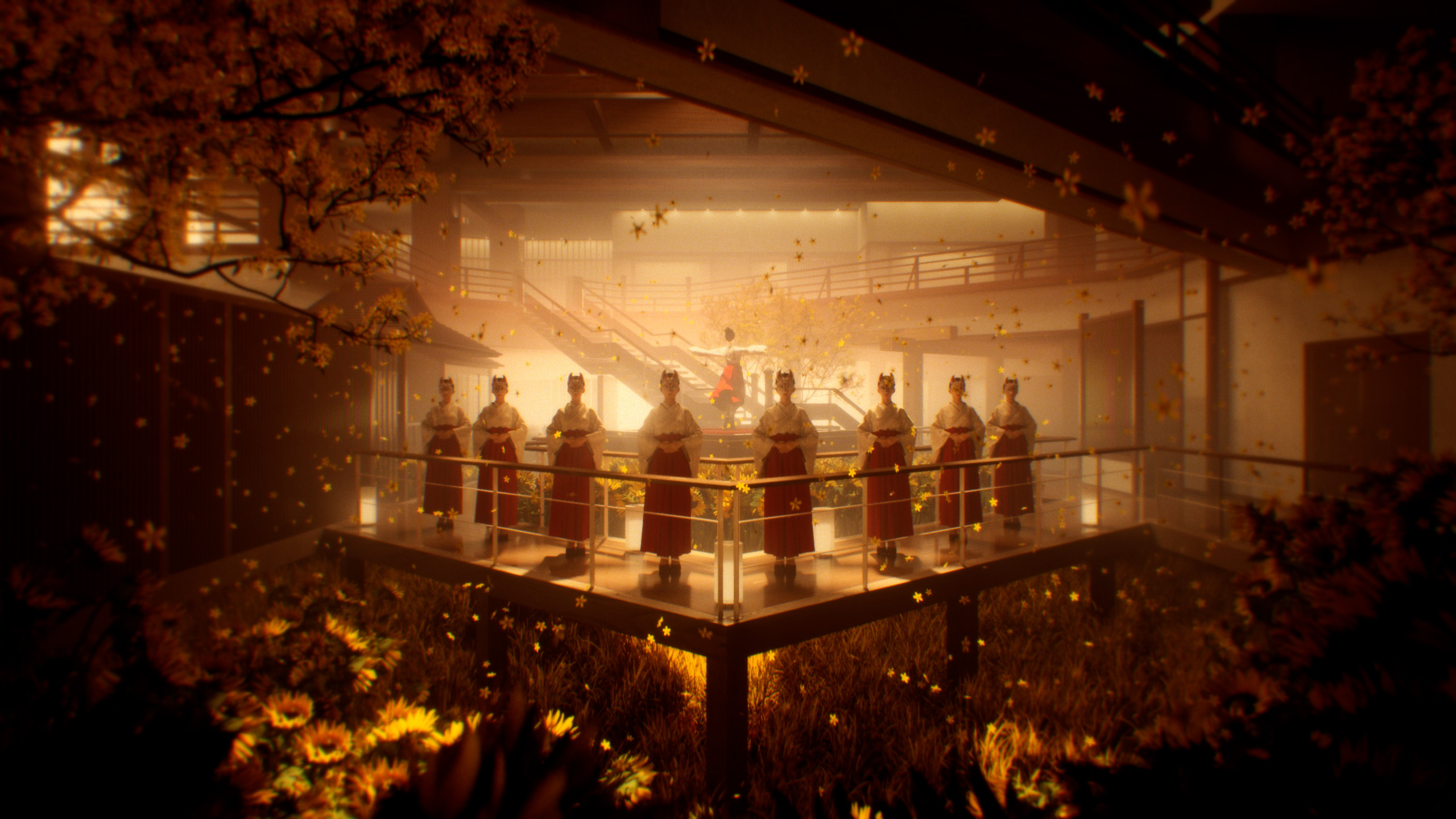Final Animation + WIP Montage
Final Animation Shot 4
Final Animation Shot 3
Final Animation Shot 2
Shot 4 Breakdown
Shot 3 Breakdown
Shot 2 Breakdown
WIP (iClone)
WIP (CC)
Shot 3 Iterations
WIP (C4D)
WIP (CC)
WIP (Substance Painter)
WIP Model
Shot 4 Iterations
"Kagura" is a sequel to "Ballerina", a fantasized version of a Shinto ritual ceremonial dance in Japan. Traditionally, the dancer herself turns into god during the performance - here depicted as the dancer's ballerina tutu dress transforming into a hakama as she dances on the floating stage, purifying spirits of nature.
As both an architect and a CGI artist, I am constantly struggling between creating art for mass appeal as opposed to simply creating a well-composed image that I personally love.
In "Ballerina" I combined ballet with Baroque architecture, knowing full well that glamorous ballet poses and architectural style would draw the most attention.
Ballet, an art form widely known to have stringent standards of beauty and highly susceptible to public and self-criticism, is the metaphor of my artistic practice, particularly in gaining online traction through social media. No matter how proficient I become in my skills, the struggle never fades away as I feel like I am always competing against every other artist for attention.
"Kagura" , on the other hand, embodied my enthusiasm for Japanese culture and aesthetics. The transformation sequence is a literal "reveal" of my inner conflict, as I have come to terms with it and accepted the fact that creating art could simply be an act of self-indulgence.
For anyone interested in the making-of, I have written an article detailing all the challenges I overcame working on the project:
https://www.foxrenderfarm.com/news/the-making-of-kagura-a-photorealistic-cg-animation-created-by-kay-john-yim/



